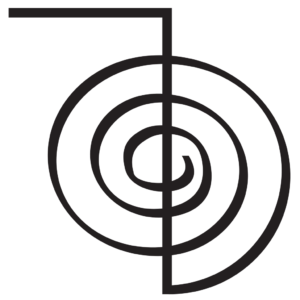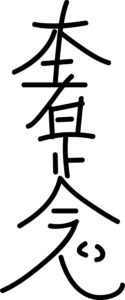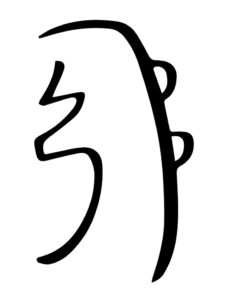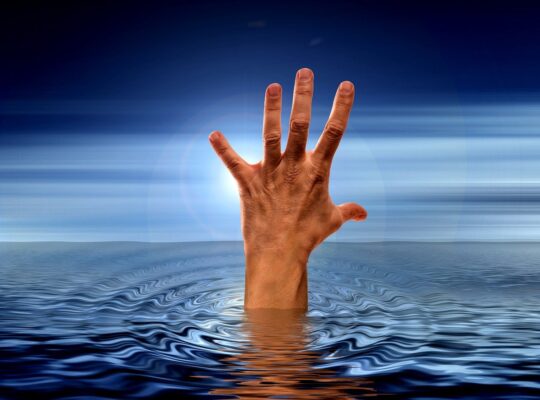Reiki (pronounced “RAY KEE”) is a holisticA healing approach that looks at the whole person and not just their physical symptoms, in order to eradicate illness and produce well-being in the mind, body, and soul. healing therapy that was developed over the course of more than two hundred years by Mikao Usui, a Buddhist monk. This popular Japanese technique is said to soothe the mind, body, and soul. It’s said to reduce stress and promote relaxation. It can be used for self-healing or as an alternative medical treatment for many different types of ailments, such as emotional, physical, and spiritual ailments. With long-term sessions, people may experience lasting relief from chronic pain, stress, depression, and anxiety.
The word “reiki” is made up of two words ‘’rei’’ meaning God’s Wisdom or Higher Power and ‘’Ki’’ meaning life force energy. Therefore, one could say its overall meaning is “universal life energy.” Reiki Masters are thought to have the ability to channel this universal energy and transmit their life force through their hands to other people and objects around them in order to heal them.
Purpose/Aim
The goal of Reiki is to align the person’s energy with his or her Higher Self"Soul" or "Spirit" of an individual in order to achieve complete balance. This process removes any blockages that are preventing this healthy flow of energy. Reiki Energy Healing is done through the use of hands-on treatments, meaning that it does not require any needling or invasive techniques. Sometimes, Reiki practitioners use their hands or sometimes their whole body to channel the life-giving energy to heal another person, either through physical contact or at a distance, even if they are not present at the time. Therefore, Reiki can be delivered in person, by phone, or through the internet in the form of distance healing. Furthermore, its believed that this energy may be channeled into a person’s aura to promote self-healing from injury and disease.
Reiki Symbols
Symbols are used in Reiki to invoke the desired energies. The symbols in Reiki are not words. They are drawn images that represent universal life force energy. The symbols in Reiki were developed by Usui who believed that the symbols could help to heal others and themselves. Symbols are objects, characters, words, or pictures that represent something abstract. They are often created by drawing a shape in the air with our hands and represent spiritual ideas like peace and love. These symbols can be drawn on the body with a stick of incense, or they can be projected onto a person or an object. When we create symbols with our hands in Reiki sessions, it creates an energetic circuit which is then sent to the recipient for healing.
The three most commonly used sacred symbols are Cho Ku Rei, Sei He Kia high vibrational, fast frequency, and life force energy connected to all living things., and Hon Sha Ze Sho Nen and a brief explanation for each is below.
Cho Ku Rei

Cho Ku Rei (pronounced “cho-koo-ray”) is one of the most known reiki symbols, but the words Cho Ku Rei (or CKR) carry an interesting mix of meanings and beliefs.
Traditionally speaking, Cho Ku Rei is a Japanese term meaning to write quickly. The term itself was first identified by the author of the book “Writing with speed: how to be productive in less time” (2006), who noted that the velocity of writing increases with practice and can be increased even further through a series of mental routines. In this case, Cho Ku Rei is not about how many words one writes every minute; rather, it focuses on how many finished words one writes in a specific time period.
Japan is one of the few countries in which it is still socially acceptable to wear white after a death. Cho Ku Rei, or “death attire,” is seen as an extension of deep respect for the deceased. This custom has its roots in ancient Japanese culture, and it came from the Buddhist tradition that encouraged individuals to wear white clothing after death. The Buddhist tradition started to spread throughout Japan, with people from different sects all following this trend. Eventually, it became a tradition that helped with mourning and grieving when a family member dies. This is centered around the belief that a person’s spirit leaves their body when they sleep and wanders off to various places. At some point, the person’s spirit will return to visit their home or may stay with family members. Mourning rituals have been followed in Japan for centuries and Cho Ku Rei has been an important part of this ritual since its inception.
In Usui Reiki, Cho Ku Rei which means “source of light,” is used as a Power/Focus symbol. Its been used since the days when Reiki was first brought to the West. When implemented (by a Reiki PractitionerSomeone who practices Reiki. He/she has at a minimum completed either Reiki 1 or Reiki 2.), it is a systematic procedure with many steps, and it has been designed to bring about specific results. Its often used at the beginning and end of a session. The practitioner can also use it for self-development or in various situations, for healing others.
Sei He Kia high vibrational, fast frequency, and life force energy connected to all living things.


In Usui Reiki, Sei He Kia high vibrational, fast frequency, and life force energy connected to all living things. (pronounced “say-hey-key”) is used as the Mental/Emotional symbol, and it’s associated with harmony and balance. It is used by practitioners when there is a need for purification, balance, and harmony. One source translates Sei He Kia high vibrational, fast frequency, and life force energy connected to all living things. (or SHK) meaning as “God and man become one” or “the earth and sky meet.”
When implemented by a practitioner, it’s used to bring healing in the areas of emotional release, fatigue, memory, depression, self-love, Kundalini energy, renewing the mind, and aura cleansing, just to name a few. It is often used in conjunction with CKR.
Hon Sha Ze Sho Nen
Hon Sha Ze Sho Nen (pronounced “hon-shaw-ze-show-nen”) is the symbol of Distance/Connection. It means “having no present, past, or future”; therefore, transcends time and space. It is the symbol invoked when delivering healing at a distance. It can be delivered as a full session to heal anyone, anywhere – whether in the present, past or in the future.
One source reports that when implemented, Hon Sha Ze Sho Nen (or HSZSN) sends healing and/or inner clarity regarding past traumatic events and the betterment of one’s future, along with healing chakras and one’s aura. It can be made in conjunction with the Power symbol followed by the Harmony symbol if needed.
Reiki Benefits
Reiki can be beneficial for everyone who is willing to try and experience it. But does this mean that it is a good idea for every member of the family to get a session from a Reiki healer?
Practitioners believe that the benefits of Reiki are not limited to their patients. As such, they recommend that any person in the family gets at least one session with them. This way, they can maintain their mental and physical health as well. Whilst it may not be the choice of healing for everyone, it is for someone who wants to deeply heal. It’s gentle, non-invasive, and very relaxing.
Learning Reiki
It is a technique that has been passed down through generations. Anyone can use Reiki for beneficial purposes – it does not require any complex training to get started and anyone can learn how to do it themselves with guidance from someone who already knows such as a Reiki MasterAnyone who has completed Reiki 3 (or 4) and now practices Reiki professionally. Sometimes used to shorten in reference to a Reiki Master-Teacher. .
Reiki training is available at three or more degrees (or levels). Reiki I (also referred to as Reiki 1 or Reiki 1st degree) teaches basic hand positions for self-healing treatments and how to carry out a treatment for an immediate family and friends. Next, is Reiki II (also known as Reiki 2 or Reiki 2nd degree), where symbols are taught such as the ones shared above. This is a step up from level one pursued by those who are interested in a deeper understanding. Starting at Reiki III (also known as Reiki 3 or Reiki 3rd degree), is where practitioners are ready to offer services professionally as well as teach Reiki to others. Each of these levels may include one or more attunements and in some cases, a Reiki Teacher would combine all attunements into one. Different systems of Reiki have different time frames between levels or degrees. It really depends on your teacher.
Reiki can be used by anyone who is willing to learn. It can provide a sense of peace and a feeling of being cared for. It’s even becoming increasingly popular in the workplace. There are companies that offer Reiki as an employee benefit in order to help their employees feel cared for. So, if you are looking for a new healing modality, this one is worth exploring.
Disclaimer: It’s important to note though, that just because something is natural does not mean zero risk. While many natural therapies are very low risk there still may be complications, contraindications, and contra-actions; therefore, this article is for entertainment and informational purposes only. The Internet is full of information on how you can cure yourself with natural remedies, therapies, fitness equipment, and more, but we recommend that you seek out a Qualified HolisticA healing approach that looks at the whole person and not just their physical symptoms, in order to eradicate illness and produce well-being in the mind, body, and soul. Wellness Practitioner, Reiki, or energy medicine expert and always consult a doctor before trying any new things. Never stop taking any prescribed medication without speaking to your health practitioner first.

